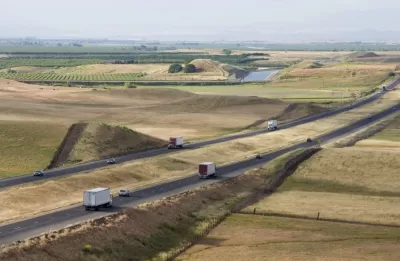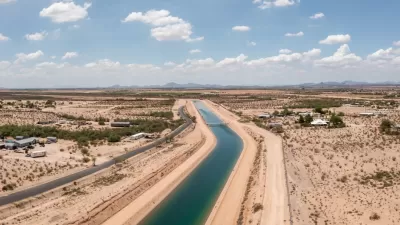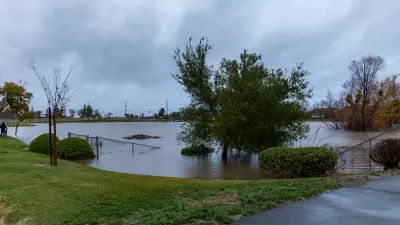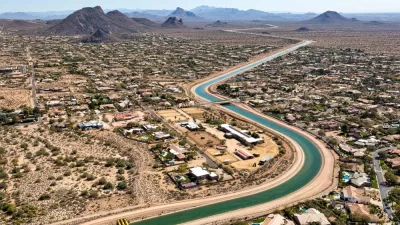A new state grant program will help California farmers convert idle land to new purposes in an effort to mitigate the environmental and economic effects of drought on the state's Central Valley.

As drought continues to strain California's water supply, Dustin Gardiner reports that "Farmers are being forced to fallow — a term for plowing land and leaving it unplanted — their fields and orchards in unprecedented numbers" due to restrictions imposed by the state's Sustainable Groundwater Management Act.
Leaving land fallow, however, can lead to more severe dust storms that would worsen the Central Valley's already dismal air quality. To compensate farmers for their lost revenue and prevent a future dust bowl, the state has allocated $50 million to a program that supports farmers in finding new uses for fallowed land. According to the article, "local organizations such as irrigation districts or municipalities will receive block grants, funding that must then be doled out to help farmers convert their land to uses that aim to improve air quality, conserve water or provide other community benefits."
The Multibenefit Land Repurposing Program will encourage farmers to repurpose their land in a variety of ways, such as restoring wildlife habitat, building recharge basins or renewable energy facilities, or converting land into parks.
In October, California Governor Gavin Newsom declared a statewide drought emergency, urging water agencies to consider implementing mandatory conservation measures as the state faces one of the worst droughts in its history.
FULL STORY: To fight off a California dust bowl, the state will pay farmers to reimagine idle land

Study: Maui’s Plan to Convert Vacation Rentals to Long-Term Housing Could Cause Nearly $1 Billion Economic Loss
The plan would reduce visitor accommodation by 25,% resulting in 1,900 jobs lost.

North Texas Transit Leaders Tout Benefits of TOD for Growing Region
At a summit focused on transit-oriented development, policymakers discussed how North Texas’ expanded light rail system can serve as a tool for economic growth.

Why Should We Subsidize Public Transportation?
Many public transit agencies face financial stress due to rising costs, declining fare revenue, and declining subsidies. Transit advocates must provide a strong business case for increasing public transit funding.

How to Make US Trains Faster
Changes to boarding platforms and a switch to electric trains could improve U.S. passenger rail service without the added cost of high-speed rail.

Columbia’s Revitalized ‘Loop’ Is a Hub for Local Entrepreneurs
A focus on small businesses is helping a commercial corridor in Columbia, Missouri thrive.

Invasive Insect Threatens Minnesota’s Ash Forests
The Emerald Ash Borer is a rapidly spreading invasive pest threatening Minnesota’s ash trees, and homeowners are encouraged to plant diverse replacement species, avoid moving ash firewood, and monitor for signs of infestation.
Urban Design for Planners 1: Software Tools
This six-course series explores essential urban design concepts using open source software and equips planners with the tools they need to participate fully in the urban design process.
Planning for Universal Design
Learn the tools for implementing Universal Design in planning regulations.
City of Santa Clarita
Ascent Environmental
Institute for Housing and Urban Development Studies (IHS)
City of Grandview
Harvard GSD Executive Education
Toledo-Lucas County Plan Commissions
Salt Lake City
NYU Wagner Graduate School of Public Service





























